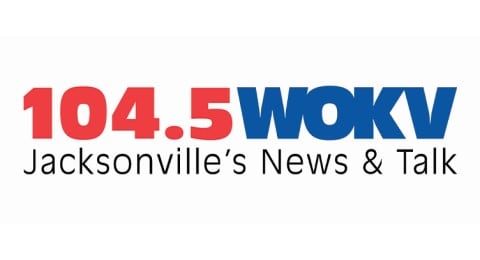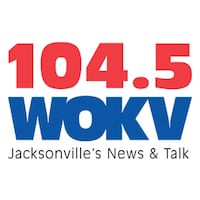Jacksonville, FL — As Jacksonville’s public library system sees the possibility of expanded hours and real movement on adding a new location, they’re keeping focus on how to make the most of the City’s money, and how to make sure you are safe.
The $1.2 billion City budget proposal from Jacksonville Mayor Lenny Curry includes expanded hours for Jacksonville Public Library. The decision was immediately cheered by supporters and some on the City Council- including one literally cheering the announcement as the Mayor unveiled the plan. The proposal must still be approved by the City Council.
WOKV has learned the expansion would add a day at nine of the systems 21 locations, which means all of the City’s Branch libraries would be open six days a week, excluding Sundays. In addition to the five days a week they’re already open, Argyle Branch, Beaches Branch, Murray Hill Branch, San Marco Branch, South Mandarin Branch, West Branch, and Willowbranch Branch would all now be open Mondays; and Mandarin Branch and Maxville Branch would be open Fridays.
“We do see this as a huge step up for services for all of Jacksonville, but certainly for the nine communities that will be affected by the change,” says Jacksonville Public Library Director Tim Rogers.
JPL’s other branch libraries- Bradham and Brooks Branch, Brentwood Branch, Brown Eastside Branch, Dallas Graham Branch, Regency Square Branch, University Park Branch, and Westbrook Branch- are already open six days a week. The Regional libraries- the Main Library in Downtown, Highlands Regional, Pablo Creek Regional, Southeast Regional, and Charles Webb Wesconnett Regional- are open seven days a week
The expanded hours would also mean JPL would hire 13 additional employees, bringing their cap up to 310 people, according to the budget proposal.
Rogers says the expanded hours are important not only for people who rely on library computers, internet, and meeting space, but to JPL’s ability to compete for certain grant funding. He says they host literacy and afterschool programs, but when they seek money for those programs, they are a lower priority than systems that offer programming every week day.
“Public library service- the vast majority of that- should always come from the public dollar. But I think, to enhance the services that we can offer and certainly to try out new services, we want to use whatever means and mechanisms we can to fund those things in a future facing way,” he says.
Whatever you use the library for, Rogers wants you to fee safe. They recently hired a Safety and Security Manager, as they strive to create “Community Safe Learning Zones”, where you don’t have to question your personal safety, your data integrity, your property security, and other factors.
“The library is a really clean, safe, and secure environment within the community that we want folks to feel comfortable visiting,” he says.
To that end, they recently started piloting a program where, instead of relying only on contracted security, they staff a uniformed Jacksonville Sheriff’s Office officer at two libraries many afternoons. The officer interacts with people in the library, checks around it outside, and parks his or her car near the front to show there is a presence at the location. This pilot started at Bradham and Brooks on May 21st and at Brown Eastside on July 16th.
“We want to show that this is a safe place,” Rogers says.
While the program is early on, Rogers says they’ve already seen success not only in deterring incidents at the libraries, but in boosting relations between officers and library patrons. He says this setting provides the officers a way to directly interact with children and community members in a non-threatening environment, which they believe will have a positive impact in the community.
They’re hoping to expand this pilot in to two or three other locations- potentially including Dallas Graham and Charles Webb Wesconnett- in the upcoming fiscal year, based on the number of incidents taking place at and around the libraries. Rogers says they’ve already identified funds within their budget that could be shifted to accomplish this expansion, so they did not request any additional funding for it.
Another area where they are not getting additional funding, but Rogers is nonetheless cheering, is in materials. The budget proposal shows the funding for that flat, at almost $3.8 million. But, Rogers says $850,000 of their materials funding has been non-recurring until now, meaning they’ve had to ask to secure it each year. He says Curry’s budget proposal moves that to a recurring line, which will keep the funding going in future years.
Instead of asking for more, Rogers says they’re looking at how to get the most return for each dollar.
To do that, Rogers say they’re forming a “Data Analytics Unit” on how resources can best be spent to meet community needs, and how people are using the libraries. Rogers says eBook usage continues to climb, as an example, so they are considering how to meet the needs of patrons who want to go beyond traditional books. By doing that, he expects they will not only have satisfied customers, but be able to stretch funding even further.
Another study-driven component the library is pursuing is an examination of four urban core libraries, to see how they can be moved in to the 21st century. The Mayor’s Capital Improvement Program- which is put forward in conjunction with the budget- asks for $330,000 to determine how to bring the same level of service that newer libraries have, to some of the City’s older branches. The focus of the study is Brentwood, Brown Eastside, Dallas Graham, and Westbook.
“The report will define changes needed to enable the libraries in these neighborhoods to deepen their reach as community anchor institutions, jumpstarting redevelopment, acting as economic catalysts, and enhancing the quality of life for residents of all ages. The study will provide a path to design technologically advanced libraries that will help bridge the digital divide and ensure that all students, workers and business owners- regardless of ZIP code- have an equal opportunity for educational and economic success,” the CIP says.
This budget proposal also sets the stage for a brand new location in Oceanway. The CIP proposes borrowing $2.5 million in the upcoming fiscal year, to be used to conduct design and acquire land for the branch, although the exact location is not clear.
“That’s a community that has long wanted a library. We definitely are seeing a lot of growth up there, so that’s certainly a great add for the library,” Rogers says.
The CIP says it’s believed about 300,000 visits would take place at that library each year. The proposal says the funding is being requested this year “while good locations for a library remain available”. The total proposal for the project is listed in the CIP as around $11.85 million, and the anticipated operating costs would be around $1.3 million annually, including to staff 21 employees. Those costs are not being clearly committed at this time, however, only the funding for the land acquisition and design.
Neither the urban core study nor the Oceanway branch will be quick, but Rogers says they’re incredibly important.
“That’s our investment in the future for Jacksonville Public Library,” he says.
The Jacksonville City Council Finance Committee will spend the next few weeks vetting and debating the Mayor’s budget proposal and CIP, before passing a final version of both ahead of the start of the fiscal year October 1st. WOKV continues to work through the budget proposal and will bring you updates as we learn more about how your tax dollars are being spent.










